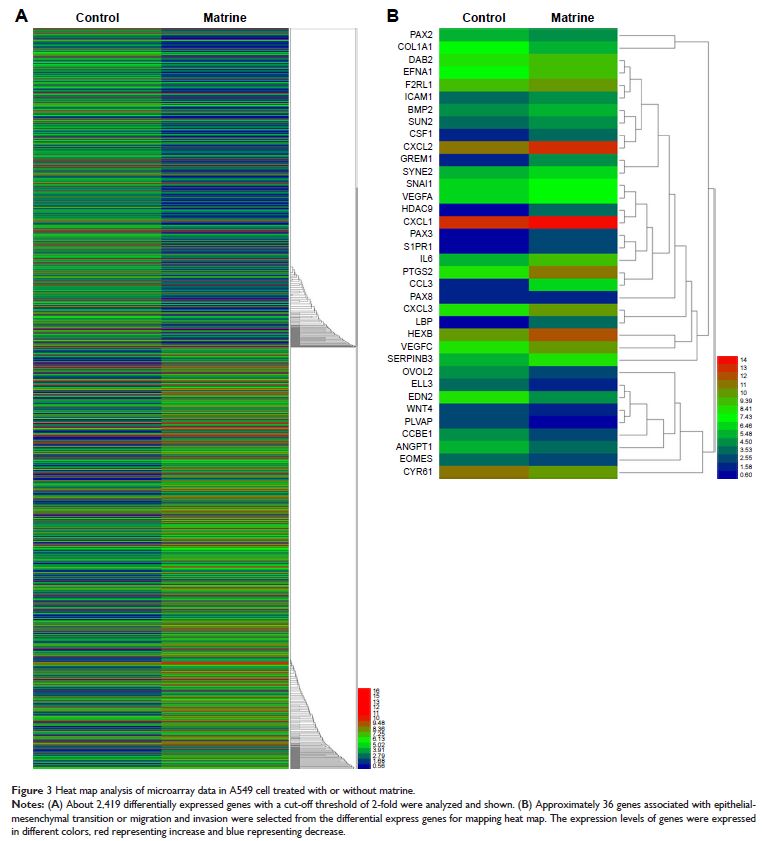9 7 8 1 6
论文已发表
注册即可获取德孚的最新动态
IF 收录期刊
- 3.3 Breast Cancer (Dove Med Press)
- 3.4 Clin Epidemiol
- 2.5 Cancer Manag Res
- 2.9 Infect Drug Resist
- 3.5 Clin Interv Aging
- 4.7 Drug Des Dev Ther
- 2.7 Int J Chronic Obstr
- 6.6 Int J Nanomed
- 2.5 Int J Women's Health
- 2.5 Neuropsych Dis Treat
- 2.7 OncoTargets Ther
- 2.0 Patient Prefer Adher
- 2.3 Ther Clin Risk Manag
- 2.5 J Pain Res
- 2.8 Diabet Metab Synd Ob
- 2.8 Psychol Res Behav Ma
- 3.0 Nat Sci Sleep
- 1.8 Pharmgenomics Pers Med
- 2.7 Risk Manag Healthc Policy
- 4.2 J Inflamm Res
- 2.1 Int J Gen Med
- 4.2 J Hepatocell Carcinoma
- 3.7 J Asthma Allergy
- 1.9 Clin Cosmet Investig Dermatol
- 2.7 J Multidiscip Healthc

本文章已被撤回:苦参碱 (Matrine) 通过抑制 PAX2 诱导的上皮 - 间充质转变来阻止 NSCLC 细胞的迁移和侵袭
Authors Yang J, He D, Peng Y, Zhong HZ, Deng YH, Yu Z, Guan C, Zuo Y, Xu Z
Received 21 August 2017
Accepted for publication 26 September 2017
Published 27 October 2017 Volume 2017:10 Pages 5209—5217
DOI https://doi.org/10.2147/OTT.S149609
Checked for plagiarism Yes
Review by Single-blind
Peer reviewers approved by Dr Amy Norman
Peer reviewer comments 2
Editor who approved publication: Dr Yao Dai
***本文章已被撤回***
Abstract: Non-small cell
lung cancer (NSCLC) is the major cause of deaths among all the cancer types
worldwide. Most of the NSCLC is diagnosed at an advanced stage and the 5-year
overall survival rate is low. The reason for the low survival rate of patients
with NSCLC is mainly due to distant metastasis. Matrine, a traditional Chinese
medicine, has been shown a significant anti-proliferation and anti-invasive
effect in tumors. However, little is known on the anti-invasive mechanism of
matrine in lung cancer. Therefore, we tried to investigate the molecular
mechanism of matrine on the invasive ability of NSCLC cells in vitro. Cell
Counting Kit-8 assay was used to evaluate the cell viability. Transwell assay
was used to detect the migration and invasion abilities. Microarray assay was
used to analyze the differentiated expression genes with or without matrine
treatment. Western blotting and real-time polymerase chain reaction were
applied to detect the expressions of PAX2 , E-cadherin
and N-cadherin. Our study showed that matrine could suppress the proliferative
activity of NSCLC cells in a dose- and time-dependent manner. Further
investigation discovered that the migration and invasion of NSCLC cells were
significantly inhibited by treatment with different concentrations of matrine.
Microarray assay, real-time polymerase chain reaction and western blotting
showed that matrine could significantly decrease the expression of PAX2. In
addition, epithelial-mesenchymal transition and related proteins were
decreased. In conclusion, matrine may block PAX2 expression to interfere with
epithelial-mesenchymal transition signaling pathway that ultimately inhibit the
migration and invasion of NSCLC cells in vitro. Matrine might serve as a
potential agent for NSCLC treatment.
